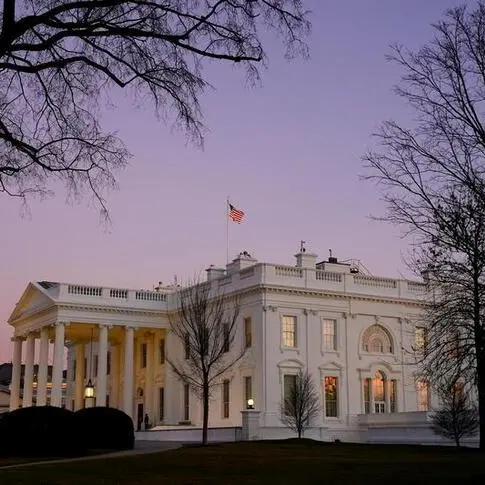PHOTO
Divers recovered the remains of two of the six missing workers more than a day after a cargo ship smashed into Baltimore's Francis Scott Key Bridge. The bodies of two men were found in a red pickup truck submerged in the icy waters of the Patapsco River. Rescuers pulled two workers from the water alive on Tuesday, and one was hospitalized.
WHEN DID THE BALTIMORE BRIDGE COLLAPSE?
Shortly after 1 a.m. EDT (0500 GMT), a container ship named the Dali was sailing down the Patapsco River on its way to Sri Lanka. At 1:24 a.m., it suffered a total power failure and all its lights went out.
Three minutes later, at 1:27 a.m., the container ship struck a pylon of the bridge, crumpling almost the entire structure into the water.
The bridge was up to code and there were no known structural issues, Maryland Governor Wes Moore said.
Tuesday's disaster may be the worst U.S. bridge collapse since 2007, when a design error caused the I-35W bridge in Minneapolis to plunge into the Mississippi River, killing 13 people.
WHAT IS THE DEATH TOLL SO FAR?
The two men whose bodies were recovered on Wednesday were identified as Alejandro Hernandez Fuentes, 35, of Baltimore, originally from Mexico, and Dorlian Ronial Castillo Cabrera, 26, of nearby Dundalk, originally from Guatemala.
The six workers who are presumed dead came from Mexico, Guatemala, Honduras and El Salvador, according to a press conference.
Authorities have suspended efforts to recover bodies in the 50-foot-deep (15 m) waters surrounding the twisted ruins due to treacherous conditions.
At the time of the crash, a construction crew was fixing potholes on the bridge and eight people fell 185 feet (56 meters) into the river where water temperatures were 47 degrees Fahrenheit (8 degrees Celsius). Two workers were rescued, one unharmed and one injured.
Authorities saved lives by stopping vehicles from using the bridge after the ship sent out a mayday call, the Maryland governor said.
The ship also dropped its anchors to slow the vessel, giving transportation authorities time to clear the bridge.
WHY DID THE BRIDGE COLLAPSE?
The metal truss-style bridge has a suspended deck, a design that contributed to its collapse, engineers say. The ship appeared to hit a main concrete pier, which rests on soil underwater and is part of the foundation.
The head of the National Transportation Safety Board said the bridge lacked structural engineering redundancies common to newer spans, making it more vulnerable to catastrophic collapse.
WHO WILL PAY FOR THE DAMAGE AND HOW MUCH WILL THE BRIDGE COST?
President Joe Biden promised to visit Baltimore soon and said he wanted the federal government to pay to rebuild the bridge.
The Transportation Department can award "quick release" emergency relief funds that are typically a few million dollars. To replace the bridge, Congress would need to approve funding. After the bridge collapse in 2007 in Minnesota, Congress allocated $250 million.
Initial estimates put the cost of rebuilding the bridge at $600 million, according to economic analysis company IMPLAN. Insurers could face billions of dollars in claims, analysts said, with one putting the cost at as much as $4 billion, which would make the tragedy a record shipping insurance loss.
HOW LONG WILL IT TAKE TO REBUILD THE BRIDGE?
Rebuilding could be a lengthy process and will depend on whether any of the remaining structure can be salvaged. It took five years to construct the original bridge from 1972-1977.
The closure of the port for just one month would cost Maryland $28 million in lost business, according to IMPLAN.
WHAT SHIP HIT THE BALTIMORE BRIDGE?
The Dali was leaving Baltimore en route to Colombo, Sri Lanka. None of the 22 crew members were hurt, the ship's manager, Synergy Marine Group said.
The registered owner of the Singapore-flagged ship is Grace Ocean Pte Ltd, LSEG data show. The ship measures 948 feet (289 meters) — as long as three football fields placed end to end. It was stacked high with containers but was capable of carrying twice as much cargo. Safety investigators recovered the ship's black box, which can tell them the vessel's position, speed, heading, radar, bridge audio, and radio communications as well as alarms.
The same ship was involved in an incident in the port of Antwerp, Belgium, in 2016, when it hit a quay as it tried to exit the North Sea container terminal.
A later inspection in June 2023 carried out in San Antonio, Chile, found the vessel had "propulsion and auxiliary machinery" deficiencies, according to data on the public Equasis website, which provides information on ships.
WHAT DO WE KNOW ABOUT THE BRIDGE THAT COLLAPSED?
The Francis Scott Key Bridge was one of three ways to cross the Baltimore Harbor and handled 31,000 cars per day or 11.3 million vehicles a year.
The steel structure is four lanes wide and sits 185 feet (56 m) above the river.
It opened in 1977 and crosses the Patapsco River, where U.S. national anthem author Francis Scott Key wrote the "Star Spangled Banner" in 1814 after witnessing the British defeat at the Battle of Baltimore and the British bombing of Fort McHenry.
HOW WILL THE BRIDGE COLLAPSE IMPACT THE BALTIMORE PORT? Traffic was suspended at the port, the 17th largest in the country. The flow of containers to Baltimore can likely be redistributed to bigger ports. However, there could be major disruptions in shipping cars, coal and sugar.
It is the busiest U.S. port for car shipments, handling at least 750,000 vehicles in 2023, according to data from the Maryland Port Administration.
In 2023, the port was the second busiest for coal exports.
It is also the largest U.S. port by volume for handling farm and construction machinery, as well as agricultural products such as sugar and salt.
(Writing by Lisa Shumaker; Editing by Daniel Wallis and Josie Kao)























